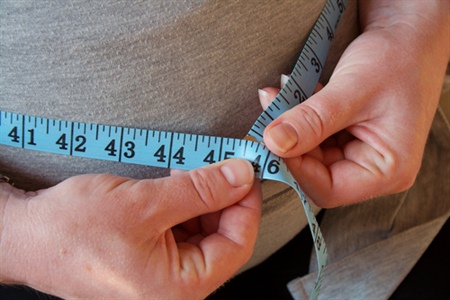Why is it Critical to Reduce Your Belly Fat?
Too much belly fat is an indicator of obesity. And, with over 40 million Americans in the obese group we need to be concerned. Obesity rates are, unfortunately, growing most rapidly in our youngsters. And, despite the fact that obesity is a preventable condition, most people continue the lifestyles that caused the condition in the first place.
The Mayo Clinic lists a variety of complications of obesity. These include blood abnormalities, cancers, depression, gallbladder diseases, gynecological problems, as well as heart disease and high blood pressure. Most of these conditions are predominantly the result of excess abdominal fat.
Abdominal fat is risky, even if you're not obese. This is because abdominal fat is different than fat in other locations in the body. It represents the number one dangerous fat on your body. On most of the body, like the thighs and hips, fat is stored in the subcutaneous lay positioned close to the surface of the skin. Fat in the abdomen chiefly consists of visceral fat surrounding the vital organs.
Abdominal fat cells can secrete hormones that find their way into internal organs like the liver. Fat, for example, situated next to the liver can drain into the liver causing a fatty liver. A fatty liver is a risk factor for insulin resistance and diabetes. Belly fat can inflame any of the internal organs and cause their deterioration.
Fat cells in other parts of your body drain into the blood stream. While this is not particularly good, it does less injury than the abdominal fat cells draining into vital organs.
So, just how big a problem is your belly fat? The ratio of your waist to hip circumference measurements is a high-quality sign of your overall health and your risk for diseases like heart attack. For women, the perimeter of your waist divided by that around your hips should be about 0.7 for good health. Because men have narrower hips, a ratio of around 0.9 would tend toward good health. If your proportions are significantly larger than these, you should seriously consider a weight reducing program.
Losing extra belly fat is one of the main health ambitions you can have.
Plus, the good news is that if you start a weight reducing program, your abdominal fat is the first kind of fat you have a tendency to lose. It doesn't matter whether your profile is an "apple" or "pear," you'll drop a greater percentage of belly fat than fat anywhere else. And, the reason is that belly fat is more metabolically active so it's easier to lose.
If you are resolute about losing that belly fat, here are 3 lifestyle changes you need to adopt:
First, follow a wholesome diet with a smaller number calories and reduce your consumption of refined carbohydrates.
Second, engage in a cardiovascular exercise plan that helps burn more calories.
Third, incorporate weight training in your overall exercise program. Muscles burn energy during exercise, so the more toned and fuller your muscles are, the faster you'll be able to burn those excess calories.
It's healthful to reduce your belly fat. You'll feel healthier and live longer without all that belly fat.
-
Staying Positive is Important to Help Lose Weight
Losing weight can sometimes be depressin
-
Workout Tips for Fat Loss
Just because you regularly clock in at the gym doesn’t mean y
-
Role of Weight Management in Weight Loss
With over 60% of the North American population currently overweight
-
The endomorph and body extra fat
Chances are bright that a lot of individuals barely possess any idea r
-
5 Super Foods That Help You Get Fit Fast
Healthy body is not a given, it is achieved only when you take good ca
-
Learning from Experience at the New Year, New You Retreat - The Biggest Losers are the Greatest Teachers
Sometimes its hard to take them seriousl
- DON'T MISS
- Five Easy Steps to a Better Body
- What Is The Need To Lose Weight
- Best Fat Loss Supplements for Weight Loss
- The Top Fat-Burning Foods
- Refusing to Let the Weather Dampen Your Workout
- Fat Burning For The Over Forties
- The Ultimate Staples for Healthy Eating
- Losing Weight: The Gastric Lap Band Way
- Weight Loss, The 6 Biggest Myths ever Told About It
- Considerations With Weight Loss Plan




